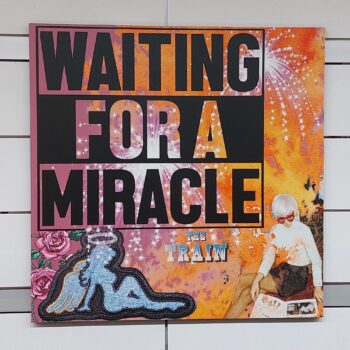For the last eight years, I have been deeply interested in the causes and symptoms of stress, particularly physical pain. Stress-induced pain can be experienced in almost any part of the body. Some persons get headaches and migraines, while others get aching arms and legs. Still others experience pain in the neck, shoulder and back, while many have recurring pain in the stomach. A few experience pain in the buttocks or in the chest, and some even in the heart. The ache is often diffuse in character, and varies in intensity during the day as well as over days, weeks and months.
Based on personal experiences, case studies and literature reviews, the two most common root causes of physical pain are: a) a longterm stressful life situation; and b) a highly stressful sudden incident or event. The reasons why an ache ends up in a special place or location within the body, however, varies for the two types of pain:
- If the ache is the result of a stressful chronic life situation, the location seems to be related to the type of stress that the person experiences; and
- If the ache is the result of a highly stressful sudden incident, the location seems to be related to the place in the body where the incident (impact) was experienced.
Physical pain caused by a stressful chronic life situation
For many people, physical pain is often the result of a longer period of high stress, that is, a highly stressful chronic life situation. Such a situation may be work-related, that is, experienced due to challenging work conditions or as a result of lack of work. In other cases, the pain is primarily socially related, that is, the result of challenging relationships, often with close family members. In still other cases, the pain may be developed as a result of challenging personal issues, such as low self-esteem, depression, despair, anxiety, guilt, and loneliness. Examples of different forms of physical pain that has developed over time, and their possible causes, are:
- Lower-back pain, which may result from lack of support or security, such as lack of economic resources, creating an inner struggle to hold life up;
- Shoulder pain, which may result from work overload and overresponsibility, creating an inner struggle to carry the weight of the world on one’s shoulders;
- Arm pain, which may result from long-term exhaustion, for example having too much duties and too little rest, creating an inner struggle to carry on and be alert;
- Stomach pain, which may result from an unwillingness to meet and accept life’s present circumstances, creating an inner struggle to go through with something against one’s own will;
- Lower leg pain (calves), which may result from hurrying and rushing through life, creating an inner struggle to run fast(er) to keep up with the pace, either yours or someone else’s agenda; and
- Upper leg pain (outer thighs), which may result from dreading a serious injury or even death of a person (either oneself or someone dear), creating an struggle to protect oneself or the other person(s), which may result in a recurring strong “fight or flight response” via the legs.
In the above examples, physical pain is the result of a longterm (chronic) situation of high mental and emotional stress. The struggle that is taking place in one’s mind and heart eventually builds up to a point where it becomes so “energetic loaded” and physiologically exhaustive that it tranforms into a physical pain in the body.
In fact, the most common stressful situations leading to physical pain may be summarized with six words: carry, worry, hurry, bury, scary and sorry. Looking more closely, each word captures the main struggle inside the person on a subconscious level. The struggle eventually causes so much built-up tissue tensions and exhaustion (and energy blockages) in the affected body part, that it results in physical pain. The associated beliefs of these six words can be formulated as follows:
- Carry – “I believe that I must carry the work load, responsibility, or duties of the world no matter what my body tells me.”
- Worry – “I believe that I must worry about what may happen, either to myself or someone else, so as to prepare for or prevent any negative outcome.”
- Hurry – “I believe that I must hurry or rush with almost anything in life as time is not enough for all that I need to do.”
- Bury – “I believe that I must not speak out my truth or opinions because it may lead to negative outcomes for myself or others.”
- Scary – “I believe that I must protect myself or someone whom I care for, so that nothing negative or dangerous may happen.”
- Sorry – “I believe that I must feel sorry and guilty, even shameful, for something negative that I have done (or someone dear to me has done).”
Physical pain caused by a highly stressful sudden incident
The other type of physical pain is the result of a sudden highly stressful event. This type of pain is rarely obvious at first glance and often quite “mysterious” even for the person in question. It may take one or more sessions with an experienced life coach or a psychologist to uncover the hidden cause and message in the pain. (For this purpose, the process called BodyWisdom is very useful, as well as EFT tapping; hypnotherapy may also be valuable, but even just a genuine interest and attentive listening may cause the necessary unfolding and pain relief.)
For example, I met a woman at a stress-rehab center some years ago. I asked her why she was participating in the “stress/pain/burnout”-program, and she told me that she, among other things, had pain in her right buttock. I asked her when she first began to experience this pain, and she told me that she had been having the ache for some years ever since she had given birth to her child. I asked if the birthing process had been very painful. No, she told me, not very difficult at all. Yet, when she began to recall the day of the delivery at greater depth, she told me that she and her husband had an accident on the way to the hospital where she gave birth. In summary, she told me the following:
“We sat in a taxi and suddenly we were hit from the right by a car. I felt a pain in my right buttock, but I was so focused on the labor pains that I didn’t give much attention to the pain caused by the accident. Then, when my husband and I arrived at the hospital and were going up in the elevator to the maternity ward, we briefly talked about what had happened in the car, but quickly decided that we would leave it at that and not think further about it; after all, we were lucky and no serious injury had happened…
I then asked if she had experienced a similar car accident earlier in her life. Yes, she had and it had also been quite stressful, but it too went overall well. That was the end of our conversation. Shortly after this, she left the building… The next day, she came up to me in the break saying that her pain in the buttock had completely disappeared! She was so surprised and happy. In fact, she had noticed that the pain was gone already as she left the building some 5-15 minutes after our conversation. How could this happen? As the example shows, when she gave more genuine attention and awareness to her body (buttock) and what had happened in the taxi, she began to process the accident more indepth… As a result, the “negative energetic residue” (or cellular or tissue memory), which had been locked inside her body for so many years, had dissolved. She was now pain-free. In sum, it took more mental awareness and emotional processing to dissolve and release the “energy blockage” (or body memory) that had remained in her buttock as a result of the traumatic event. In this case, all it took was a short conversation with some open questions and a genuine interest to listen through.




